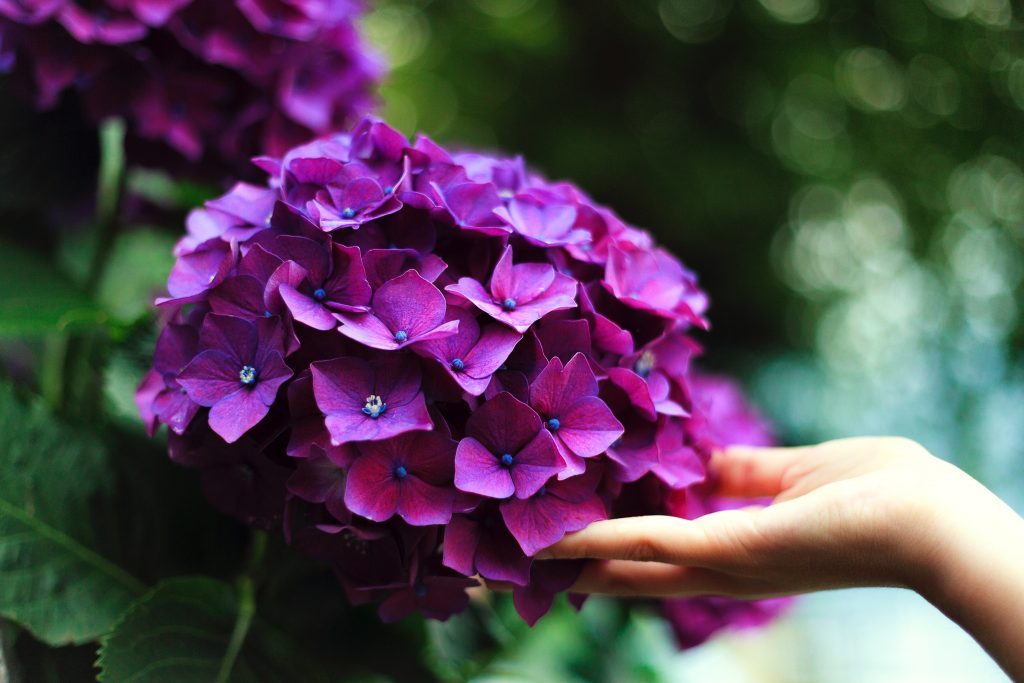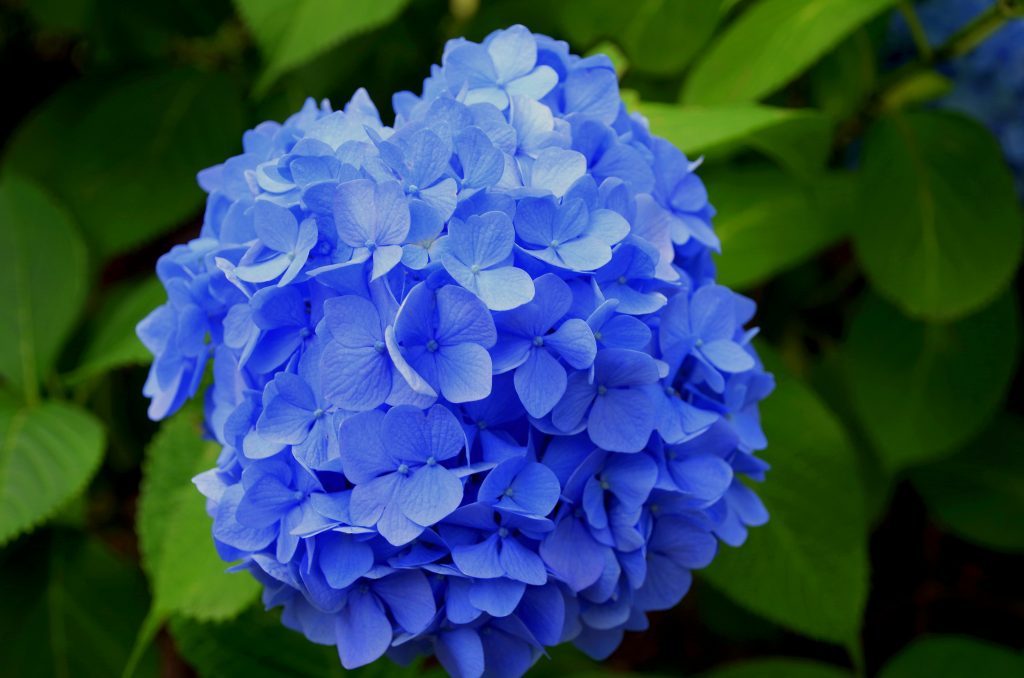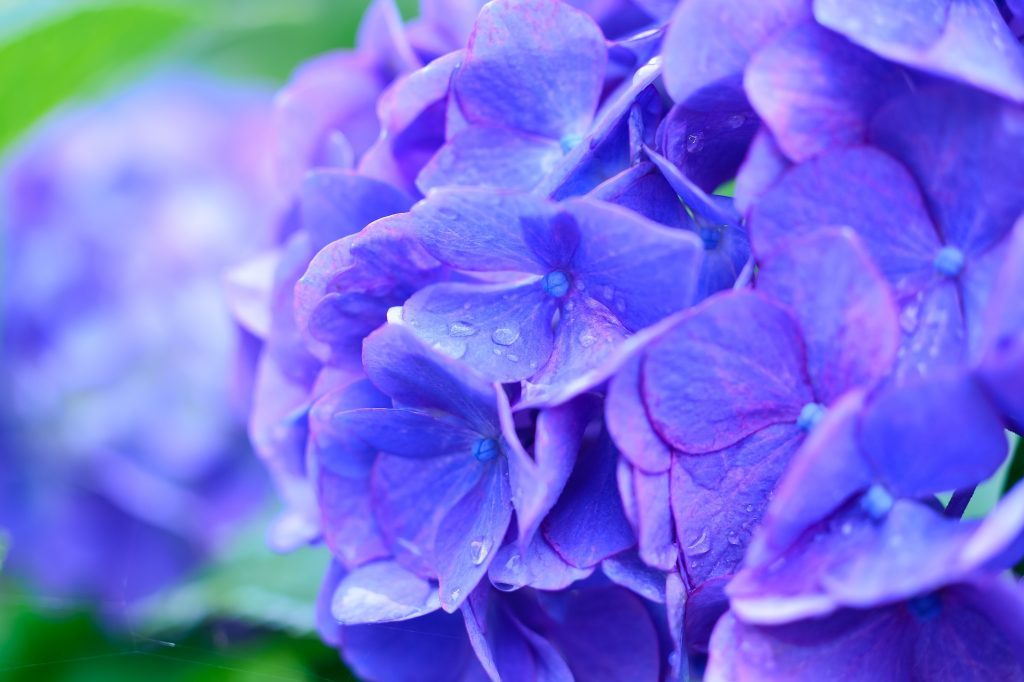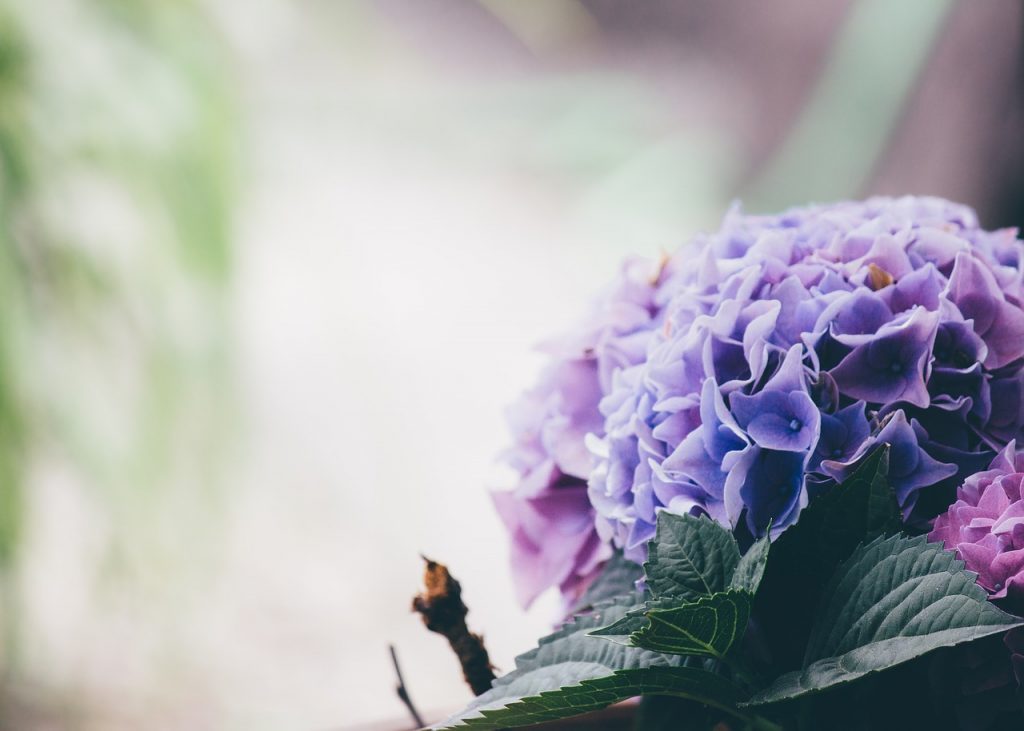Published on February 5, 2018. Last Updated on July 17, 2021.
Hydrangeas which belong to the Saxifragaceae family, are known for their beautiful pink and lavender colored flower clusters. Although they are cherished in gardens and given as gifts, the lower part of the plant (the roots and rhizomes, or the underground stem segments) also offer therapeutic benefits. Extracts have been used for medicinal purposes to dissolve kidney stones and promote urinary tract health. But in recent years, Hydrangea macrophylla for hair loss has been captivating the interest of modern scientists.
This particular plant species is native to Japan. Other than being a colorful, eye-catching bloom, it is now the subject of research, offering a potentially new approach for treating male pattern baldness.
Suppressing TGF-B2 to Treat Hair Loss Using Hydrangea Leaf Extract

Hair loss is characterized by the early entrance into the catagen stage of the hair follicle cycle. At this point the epithelial cells die, causing the hair follicle to enter the telogen resting stage.
The three main causes leading to the catagen stage include inflammatory reactions, anti-cancer drugs and androgens.
Alopecia and Transforming Growth Factor Overview
Androgen-induced alopecia, also known as androgenic alopecia or male pattern baldness involves the breakdown of testosterone to DHT. Hair follicles enter the catagen stage and miniaturize when DHT binds to genetically sensitive receptors on these structures. However, there are other pathways which also instigate the catagen stage which induces hair loss. One includes the role of TGF-B2 (transforming growth factor).
TGF-B2 activates caspases which are protease enzymes that promote various forms of programmed cellular death (e.g. apoptosis, pyroptosis, and necroptosis) as well as inflammation. In-vivo studies show that this compound is secreted in the lower part of the hair follicle during the transition between the anagen and catagen phase.
Role of TGF in Hair Health & Natural Hair Treatments
Researchers also applied external sources of TGF-B2 to cultured human hair follicles which induced cellular death. These findings confirmed it’s damaging effects on follicular health and it’s potentially prominent role in hair loss.
As TGF-B2 plays a role in cellular death, it not only instigates the catagen phase, but also transitions the follicle to the telogen resting phase. Through this paradigm, suppressing this compound could potentially be an effective approach to preventing male pattern baldness.
Although it is possible to design synthetic drugs, such chemicals may exert toxic side effects on various other regions of the body. Drug chemicals tend to operate through a single active component. While this may be beneficial for the target treatment area, it could be detrimental in other regions of the body.
Natural plant extracts, on the other hand, include a number of neutralizing compounds which balances out the excessive activity of the main compound. This helps to avoid dangerous toxic effects.
Many researchers are now interested in finding natural alternatives to synthetic hair loss drugs. A group of scientists wanted to investigate the potential of plant extract, including hydrangea leaf extract to suppress PAI -1, a TGF-B1 gene product.
How Scientists Discovered that Hydrangea Macrophylla Leaf Extract Could Grow Hair

A team of researchers obtained human hair follicles from plastic surgery skin samples and cultured them outside the body in a petri-dish. They isolated the anagen stage follicles and exposing them to TGF-B2 for two days. After this period, they looked for evidence of caspase-9 and caspase 3 activation.
Using this research design, the scientists tested over 400 plant essences. They isolated dermal papilla cells and incubated them with TGF-B2 and various plant extracts. Out of the 400 botanical types, they found that hydrangea macrophylla for hair loss performed the best in causing the follicles to elongate (i.e. grow hair).
Based on this phenomenon, it seemed that it acted as an antagonist to the TGF-B2. The researchers were able to find quantitative support for this concept by monitoring the levels of PAI-1, a precursor gene product of TGF-B1.
A Closer Look at the Hydrangea Plant Extract and Hair Growth
The researchers investigated another sample of cultured human hair follicles. This time they exposed them for seven days to the Hydrangea macrophylla leaf extract.
After the week long incubation period, the researchers observed significant hair growth. The follicles treated with hydrangea macrophylla for hair loss exhibited elongation by 2.25mm. The untreated control group of follicles only showed an average measurement of 2.0mm.

In-Vivo Studies on Hydrangea Macrophylla for Hair Loss in Mice
The experiments described earlier were conducted using cultured follicles from humans. Researchers were interested in knowing whether or not comparable findings could be seen in living organisms. They decided to perform studies on C57BL mice, a common strain of dark-haired laboratory mice.
They used wax removal to remove hair from the backs of the animals in order to start a new hair cycle where all the follicles are synchronized. Next they applied a 2% concentration of Hydrangea macrophylla for hair loss to certain zones on the treated area. Other zones were left as control samples. The researchers performed this treatment protocol for ten days to observe the stage of the catagen phase, compared to the follicles in the control zone. The researchers found that half the follicles in the regions treated with the Hydrangea leaf extract remained in much earlier catagen stages compared to the non-treated control zones.
These observations suggested that the Hydrangea extract delayed the progression of the catagen stage. Furthermore, the researchers found that this treatment reduced the production of PAI-1 from the derma papilla cells of the hair follicles.
The Future of Research on Hydrangea Macrophylla Leaf Extract for Hair Growth
This overall study sheds new light on using hydrangea extract as a way to manage androgenic alopecia by exerting greater control over the hair life cycle. As previously stated, much attention has been given to inhibiting the formation of DHT and yet there are still numerous other pathways that also contribute to pattern baldness. As shown by this study, TGF-B2 plays a significant role in the hair loss process by causing follicular cells to die and inducing the catagen stage. The authors of this research study have illustrated the ability of Hydrangea macrophylla for hair loss to suppress TGF-B2. Yet further levels of investigation are still needed to form a more complete picture for the use hydrangea macrophylla in the fight against hair loss.

The portion of the research study which dealt with human hair was performed in-vitro, by culturing follicles outside the body. Mice models were used to confirm these findings within living systems. Yet additional research on the effects of the hydrangea leaf extract within the human body is still necessary. Scientists would need to determine how the living environment which surrounds the follicles may affect the performance of the hydrangea extract. Although plant essences are typically much safer than synthetic drugs, researchers should also investigate potential side effects which may arise in other parts of the body.
Frequently Asked Questions – Hydrangea Macrophylla for Hair Loss
Will drinking Hydrangea Macrophylla tea help me control my hair loss or even grow new hair?
Hydrangea macrophylla tea may be made from either the flowers or the plant’s roots. However, the effects of a tea may not be likely to produce noticeable improvements in your hair loss condition. First, there are no documented studies or anecdotal evidence which supports the effects of drinking hydrangea tea to treat hair loss. Low concentration levels of the active therapeutic agents present in tea may be one reason. Also, how natural ingredients are processed can affect their therapeutic qualities. For example, dried plant extracts may not perform as well as pressed or distilled versions of an herb.
Is it better to ingest Hydrangea macrophylla orally or to apply it topically to the skin as a hair loss treatment?
This study only examined the topical use of the Hydrangea macrophylla for hair loss. Further studies on the oral consumption (e.g. powdered form in capsules) would be needed to determine how effective this delivery method would be. With topical approaches, it is possible to create a more direct path between the active agents of the Hydrangea macrophylla extract and the hair follicles. This can surely lower the potential for side effects and offer a more targeted form of treatment. The challenge of making topical forms of treatment work has been the issue of penetrating the skin at sufficient depths to affect the hair follicles. However, the use of safe and natural skin penetrating agents helps to make this a viable possibility.
What are the components of the Hydrangea macrophylla leaf extract that allow it to benefit the hair follicles and other areas of health?
Researchers have yet to isolate and study specific constituents found in the Hydrangea macrophylla plant extract to determine which components responsible for controlling hair loss. However, the general compounds that are believed to have health benefits include flavonoids, alkaloids, hydrangin ( a phytochemical solvent, as well as minerals such as calcium, magnesium, phosphorous and sulfur.
References
(1) Tsuji Y, Denda S, Soma T, et al. A potential suppressor of TGF-beta delays catagen progression in hair follicles. J Investig Dermatol Symp Proc 2003;8(1):65-8.
Further Reading
Read how researchers are testing oleic acid for hair loss treatment.
Learn more about the potential use of fenugreek for hair health.
